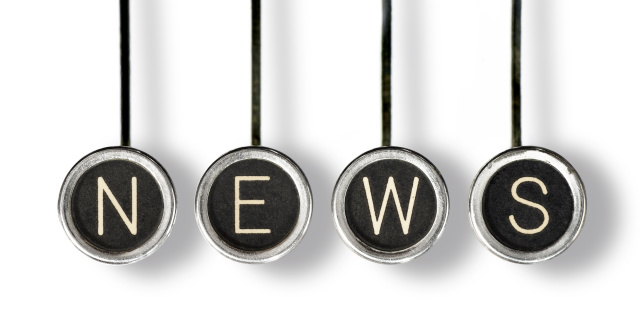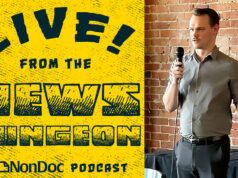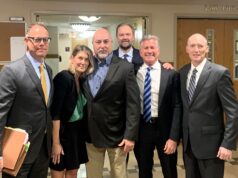The New York Times offered a great headline on Dec. 14: Reporters in Las Vegas try to crack case of who owns their newspaper.
I bit, and I clicked.
Journalists at The Las Vegas Review-Journal described the newsroom as somber and confused on Monday, as a seemingly simple question remained unanswered: Who bought the newspaper for $140 million in cash last week?
Several of the paper’s journalists used Twitter to protest the new owner’s lack of transparency, including a number who sent messages that linked to the Society of Professional Journalists’ Code of Ethics, which includes a section on transparency.
One journalist from The Review-Journal, who spoke, like others, on the condition of anonymity in order to describe a tense situation, said it was difficult to demand transparency from the people and institutions the paper reported on when their organization was not being forthright itself.
That’s a top-notch Journalism Scandal, right there! The full article is probably worth your time, but I’ll go ahead and provide the riddle’s answer, which Fortune ferreted out a couple days later:
Fortune has learned from multiple sources familiar with the situation that it is Sheldon Adelson, chairman and CEO of casino operator Las Vegas Sands Corp.
(…)
What remains unclear is why Adelson has refused to come forward. Clearly this isn’t a vanity play, and it’s also hard to imagine it as a financial investment (particularly given the steep price tag). What that leaves is political influence, particularly in a swing state like Nevada. That said, however, it would seem difficult to direct editorial coverage when the actual editorial writers are in the dark as to who signs their paychecks.
Rats. I had been hoping the anonymous buyer was Donald Freaking Trump.
Still, this whole scenario had me wondering: Do most reporters really even known who owns their publication?
NonDoc
If you’re working for a small start-up that offers Pay What You Want options to support a meager ad base, you probably know. You could say, for instance, that Andrew Rice and I have met.
NewsOK.com
Folks who work for The Oklahoman know that conservative business magnate Phillip Anschutz bought their paper in 2011. The Oklahoman profiled Anschutz and delicately danced around the mogul’s political advocacy and public secrecy. Columbia Journalism Review critiqued The Oklahoman’s take on its new owner under the headline, “How not to cover your paper’s new owner,” and fleshed out some Anschutz details, including how he had not given an interview since 1974.
Think about that. A wealthy newspaper publisher doesn’t do interviews with journalists.
The Tulsa World
Meanwhile, in Tulsa, staff of the Tulsa World know their paper’s owner is billionaire Warren Buffett. He bought the paper from now-Tulsa Frontier publisher Robert Lorton, Jr., in 2013, giving Buffett more than two-dozen daily newspapers and more than 250 total publications.

The Tranny
My first journalism job was at my hometown paper, The Norman Transcript. Somewhere around the turn of the century, the Tranny was purchased by Community Newspaper Holdings, Inc., or CNHI.
CNHI also owns 15 other newspapers in Oklahoma (Enid, McAlester, Ada, Duncan, Claremore, etc.) and more than 100 nationally.

As such, I often pose a question to journalism colleagues familiar with the company: “CNHI may own your local paper, but who is CNHI? Who has a controlling stake in that company?”
I usually answer my own questions.
Why, the Retirement Systems of Alabama, of course. Specifically, the Teachers’ Retirement fund.
From the Birmingham News’ website www.AL.com:
Owning a newspaper was sound financial investment before the dawn of the Internet.
These days, it’s a case of diminishing returns.
Still, the RSA has done well with its $627 million investment in Community Newspaper Holdings Incorporated.
The Montgomery-based newspaper chain owns publications that serve more than 130 communities in 23 states. Alabama publications include the Cullman Times and the News Courier in Athens.
The RSA also has two types of investments with CNHI, one worth about $563 million, the other $63 million.
One of the TRS board’s investments in CNHI was worth about $374 million and it averaged a 16.1 percent return rate during the past three years. The other TRS board investment in CNHI was worth about $42 million and it has averaged a -1.65 percent return rate during the past three years.
One of the ERS board’s investment in the newspaper corporation was worth nearly $188 million. It has averaged a 16.2 percent return rate of return during the past three years.
The other ERS board investment was worth about $21 million and it has averaged a 1.18 percent return rate during the past three years.
I thought it would be appropriate to contact CNHI’s corporate leaders to discuss the interesting relationship between a state’s retirement system investments and the financing of journalism across the United States, but would you believe CNHI’s contact page offers no phone number or email address?
Instead, visitors are asked to “fill out this form” for inquiries.
As I would have pursued contacting any other shrouded and secretive corporate giant, I found a phone number for a national CNHI editor.
When he answered my call, the editor seemed baffled and annoyed. He did not want to conduct an interview about CNHI’s investors, noting they were “just a private company” like any other. He gave me a number and a name for a man in corporate communications,
That number rang to a woman’s voice mail. Despite multiple messages, I have not heard back during the past two weeks.
To be taken seriously
The irony of a newspaper company lacking public transparency is thick, and somewhere I imagine a businessman formerly hassled by a CNHI reporter is rolling his eyes.
It’s no secret that transparency and above-average journalism ethics are a pillar of our efforts at NonDoc. Had we a sexier element in our mission, perhaps we could sell a few more ads.
But we believe media bear a responsibility to disclose, discuss and own the relationships that make them possible. To do otherwise is to avoid committing to true, complete and accurate information. And without that, organizations aren’t really doing journalism in its best sense.
So nowhere does it say billionaires like Anschutz, Buffett and Adelson shouldn’t own newspapers, but Anschutz should certainly do interviews if asked, and Adelson shouldn’t try to hide his new publishing power.
As for CNHI, they should put a phone number on their contact page.
Because how can journalism entities expect the public to take their efforts seriously if their managing entities don’t take seriously the public’s right to know?
At that point, they’re no better than faceless and nameless blogs that don’t even seem to understand why they lack credibility.
No legitimate publication will make you question who owns it.






















